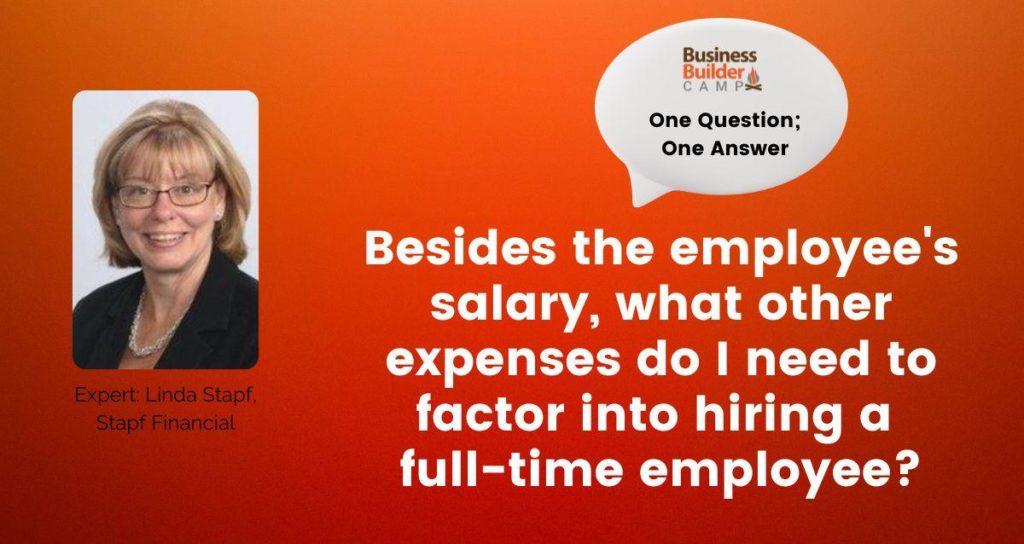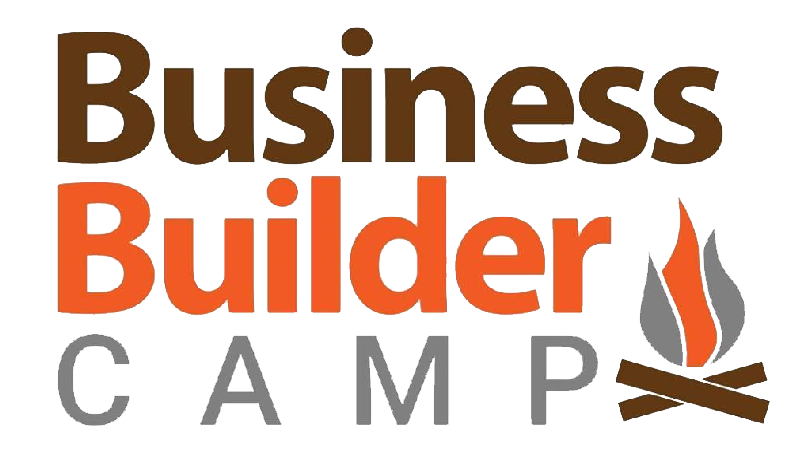
The One Question: One Answer series has two goals. First – we want to help answer your questions, one at a time. Second – we want to connect you with highly qualified, trustworthy individuals.
_____________
One of the most common challenges of Business Builders is how to grow a business. Many of our members have gone through, or are going through making their first full-time hire – officially moving them from a solopreneur to a CEO.
This single move is significant and scary. This One-Question; One-Answer post is for those who are considering or in the midst of the first hire.
Question: Besides the employee’s salary, what other expenses do I need to factor into hiring a full-time employee.
Before we get to the answer, let me introduce Linda Stapf. Linda owns Stapf Financial and is a Profit First Certified accounting and tax professional. She serves primarily small businesses in service industries. Learn more about Linda and her business here – https://stapffinancial.com.
Answer – from Linda:
Great question ! I view employees as an investment in the future growth of my company. The salary is just the starting point.
- Payroll taxes are assessed at state and federal levels, 10% of salary often covers that cost.
- Depending on your state, you might need insurance in all its flavors: workers compensation, health insurance or disability insurance. Your auto insurance carrier might need to be notified if they are driving vehicles.
- For each hire, I need to add computers, additional software licenses, phone line access, training and an email address for each employee. You might need a full working setup that includes vehicles and tools.
- Will you provide benefits, like retirement plans? Do your current benefits need to change because you just hired someone? How much vacation pay will you offer?
If you don’t have exact numbers for the above amounts a rough estimate using 25% of salary will work for planning purposes.
TIP FOR FEELING MORE CONFIDENT ABOUT THE NEW HIRE: If you aren’t sure that you are ready to hire yet, here’s a simple test I used myself and recommend to other business owners. Setup a separate bank account and move the expected employee cost into it weekly. You will quickly see if the business can support the cash flow. I did this myself, it felt great to know that the cash flow worked and I had some dollars set aside to support the ongoing payroll as I brought them onboard.
When you have all these numbers you are able to calculate what accountants call the labor burden rate. You can then use that rate to ensure that you are pricing correctly to create a profit.
Don’t discount the amount of your time it will take to bring them up to speed. A good training plan/employee development program is critical. A friend of mine has developed a 100 day personal development plan for every hire and detailed systems for each employee to follow. He is successfully creating the highest quality employees from day one by setting them up to succeed.
Feel free to use the Stapf Financial “Labor Burden Rate” spreadsheet here.
If this answer is helpful and you want to learn more from Linda, set up a free consult call with her here.
